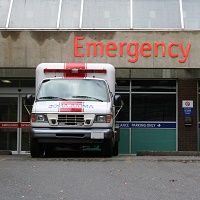Article
Mobile Organ Preservation Vehicles: The Public's Perception
Author(s):
Studying new approaches to address organ donor shortage shows some positive results for uncontrolled donation after circulatory determination of death.

With more than 124,000 people in the U.S. waiting for an organ transplant, new organ procurement methods need to be established.
The Institute of Medicine issued a statement in 2005 suggesting that uncontrolled donation after circulatory determination of death (uDCDD) could help to increase the availability of organs for donation.
uDCDD occurs when a patient suddenly experiences cardiac arrest outside of the hospital, resuscitation is unsuccessful and the organ donation is possible. In this situation an organ preservation unit (OPU) would need to obtain consent from loved ones and assess patient eligibility for organ donation.
An article published in the November edition of Annals of Emergency Medicine looked at the New York City out-of-hospital uDCDD program from December 2010 to May 2011. This program hoped to obtain kidneys from patients who died suddenly from cardiac arrest outside of the hospital.
A typical situation expected during this study would be as follows: EMS would arrive on a scene of a cardiac arrest patient. Once the patient was determined to be nonresponsive to resuscitation, they would conduct a basic screening to determine organ donation eligibility. If appropriate, an organ preservation vehicle would be sent to the scene. If the patient met the strict inclusion criteria, they would preserve the organs in vivo using a portable ventilator and chest compression device until the organs could be procured in a hospital setting.
In the NYC uDCDD program, the OPU responded to 124 cardiac arrests. The OPU only interacted with 9 authorized parties (loved ones able to provide consent). Four of the 9 authorized parties were willing to authorize donation. The other 5 reacted in a positive and favorable manner but withheld consent.
Staff were required to keep thorough documentation of public interactions to the OPU as well as personal reactions. From the study, 837 operation notes were collected which proved to be valuable.
Unfortunately, no organs were recovered during the study period due to strict criteria and an unavoidably complicated protocol.
After reviewing operation notes, the author concluded that in lieu of the small sample size, the public’s perception was more favorable than anticipated showing promise for future uDCDD programs.




